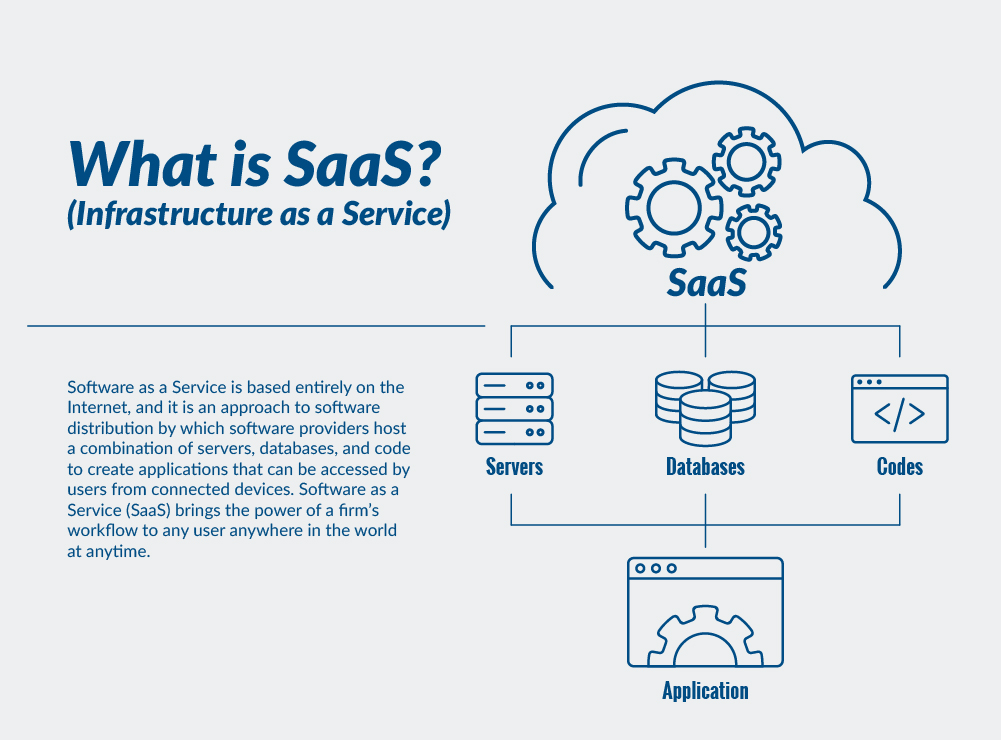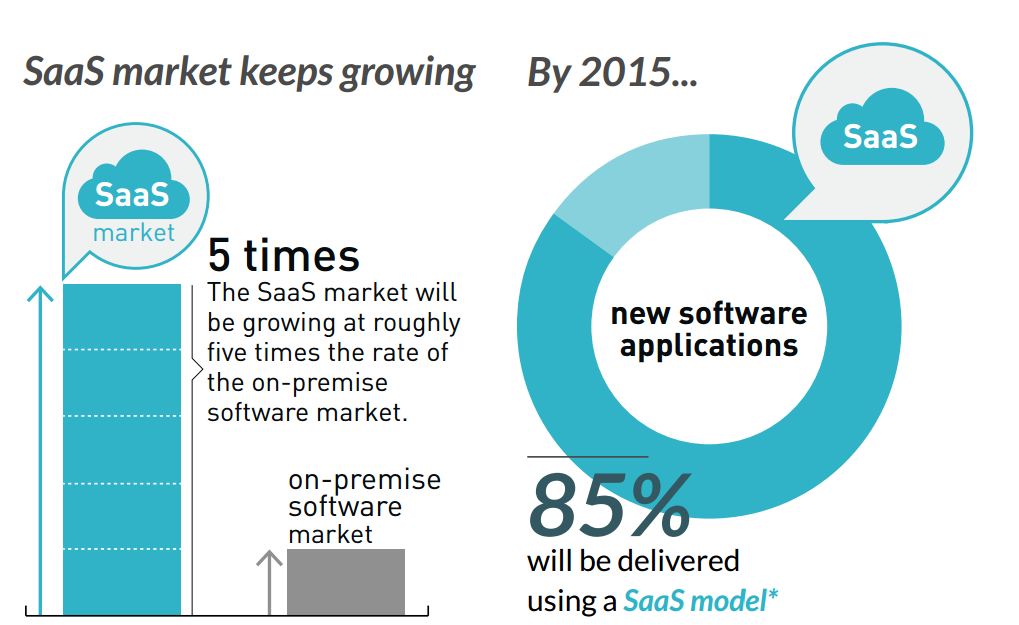The Software as a Service (SaaS) model is relatively new, so many people find it hard to understand how the model works. Unlike the traditional businesses that sell you once and then never see you again, the SaaS model sells you a renewable subscription. It constantly makes efforts to retain customers and grow the customer base.
In this post, we will walk you through the ideal structure of a SaaS company, the role of different units, and how a digital unit ensures cohesion within the company to keep it on track. But before that, it is important to take a holistic view of SaaS businesses and what it has in store for SMBs and startups.
The rise of SaaS solutions:
The last few years have witnessed a voracious growth in SaaS applications, which are reshaping the face of enterprise IT. According to the estimates of Gartner, SaaS revenues are expected to reach $85 billion by the end of 2019. Companies like Microsoft, Oracle, Salesforce, and SAP have developed SaaS applications for the fundamental business technologies including email, customer relationship management (CRM), human resource management (HRM), accounting and collaboration.

SaaS offers numerous advantages to businesses, which is fueling the growth rate of companies, large and small alike. It removes the need for acquiring new hardware, such as computers and data centers, for organizations that also eliminate the ensuing expenses of hardware acquisition, installation, and maintenance. This is the reason why 73 percent of organizations intend to move all of their apps to SaaS by 2020.
The structure of a SaaS business’ team:
The ideal structure of a SaaS business’ team depends on how long you’ve been operating, the company’s financing, and a plethora of other factors. However, a SaaS business requires specific units and the right balance between those units in order to succeed. Each unit requires members with the right profile to ensure high scaling and solid foundation of the business. A glance at how HubSpot – a leading SaaS company with over 1960 employees – had engaged the first 100 employees in different units might help us understand the growth pattern of the company.
The Dev Unit
Starting from the Developers unit, the company will require programmers, engineers, product development and testing team, QA, and technical support. The development unit works on the technological side, and it ensures that new models are implemented and the existing ones improved.
The Marketing and Sales Unit
A SaaS business also needs competent Marketing and Sales units to facilitate serious growth. The two units often overlap in most cases as both have the same mission, which is to communicate value and drive revenue. Marketing is the top of the funnel (drives action) while Sales is the bottom of the funnel as it closes a deal.
Marketing typically includes content marketing, product marketing, SEO, content development, and similar tasks. While non-SaaS companies tend to focus on conversion and growth, the marketing and sales teams in SaaS businesses need to focus on user activation and retention, as that is where the revenue comes from.
The Industry Unit
Once a user has subscribed to a paid program, the industry unit may kick in and take care of the finances. The unit is mostly focused on cash management, bank activity – cash flows and fees, etc.
Admin Unit
A SaaS business also needs a good Admin unit to provide the company with the help they need to move forward. The unit also empowers support to solve a range of customer issues.
The Digital Unit
Most of the time, there is a significant overlap between the various functions and requirements in each unit. For instance, customer analytics will be required both for the marketing and sales unit. In such a case, the units need to communicate with each other and identify their boundaries.
This gives rise to the need for a Digital unit. It is a vital unit and indispensable for the growth of a SaaS business. Its importance is discussed in the following section of the post.
The importance of a Digital Unit:
Each SaaS company has its own features, products, design, and target market, and every unit has a unique set of tasks that not only promotes the company but also compliments other units. To integrate and provide a connection between the different units, there is a need for a separate unit called the digital unit.
Every organization assigns specific roles to the digital team based on the structure of the organization and the situation. Below we provide a general description and mandate for a digital team and how they are imperative for moving a SaaS business forward.
It removes the communication gaps within units:
The main role of the digital unit is to transfer things from one unit to another. Too often, the innovative ideas discussed in the lab, hub never finds its way back to the organization or another unit.
Sometimes, employees do not have any idea about the innovations going on in the Dev unit. The digital team develops methods and approaches for collaboration within the whole workforce of the company. It provides an opportunity, both for the company and individuals, to understand each other and become more flexible to achieve the business’ goals.
It works inter-professionally:
The digital unit is not a silo that can work in isolation. Its job is to form a digital direction in cooperation with other units. It is the job of the digital unit to work with specialists on specific parts of the business website. Similarly, the team can work together with marketers or a digital agency and make decisions about the content and online presence with the marketing unit. It also bridges the units with the admin unit so that the teams are aware of directions and policy changes from the administration.
It creates sales and marketing alignment:
For SaaS businesses or any business to succeed, the sales and marketing units should function as a cohesive unit. The marketing unit captures and nurtures leads before passing them to the sales unit to close the deal. A lack of communication between the two units is going to give a tough time to the sales team to do their job effectively. A high prospect abandonment rate in SaaS marketing is precisely due to this reason.
The digital unit provides a way for the units to communicate and create a lasting partnership. It helps them find the right balance so that each team understands what the other needs to close the deal.
To promote the use of digital tools within the company:
Although the digital unit connects colleagues and units, it isn’t a long-term solution. Eventually, the entire organization should shift towards digital tools and use them as part of their daily work. The digital unit often has the mandate to educate the colleagues about the use of digital tools to communicate with each other without the need of a third person. For this reason, the company arranges training programs and engagement sessions.
Final thoughts
For any SaaS business to grow, all the units need to collaborate and understand each other. The digital unit guarantees such coordination among units so they can act in unison to further the business’ objectives.
Article written by Ashley Rosa.




Cool